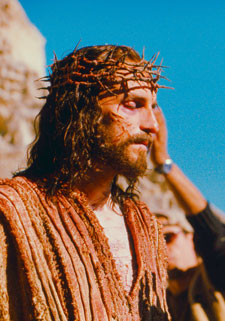All four Gospel narratives are used as source material to bring to the screen Christ’s passion - the physical, spiritual, and mental suffering of Jesus in the hours prior to and including his trial and execution by crucifixion.
The explicitly detailed violence, particularly the ten minutes devoted to the portrayal of the flogging of Jesus, caused controversy at the time and risked elevating Jesus' physical suffering to a level that the spiritual suffering of Jesus upon the cross almost fades into the background.
 However, one cannot deny the significance of the violence Christ suffered in dying for our sins. As Isaiah 53:5 says, "But he was pierced for our transgressions, he was crushed for our iniquities; the punishment that brought us peace was upon him, and by his wounds we are healed."
However, one cannot deny the significance of the violence Christ suffered in dying for our sins. As Isaiah 53:5 says, "But he was pierced for our transgressions, he was crushed for our iniquities; the punishment that brought us peace was upon him, and by his wounds we are healed."
The film's Aramaic dialogue adds to the authenticity of the film as an accurate record of historical fact particularly when Jesus powerfully speaks his seven last words from the cross - his seven final utterances recorded across the four gospels. Mel Gibson himself stated his reasons for making the film the way he did: “This is a movie about love, hope, faith, and forgiveness. [Jesus] died for all mankind, suffered for all of us. It’s time to get back to that basic message."*
* In his book 'The Passion: Photography from the Movie The Passion of the Christ'















